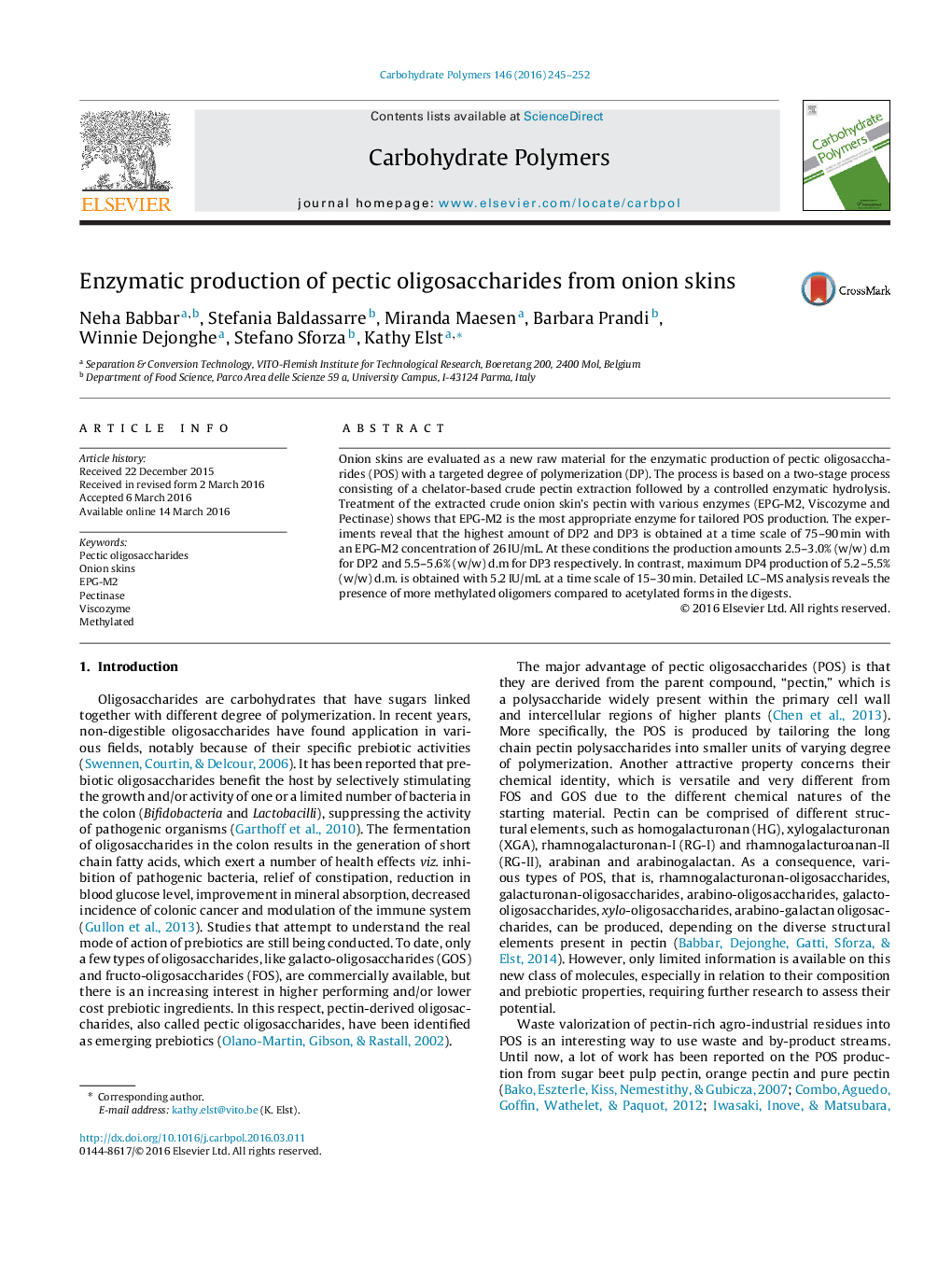| Article ID | Journal | Published Year | Pages | File Type |
|---|---|---|---|---|
| 1373974 | Carbohydrate Polymers | 2016 | 8 Pages |
•Onion hulls are potential candidates for pectic oligosaccharide production.•Enzyme EPG-M2 is able to produce pectic oligomers from onion hulls.•The formation of DPs were influenced by enzyme concentration and contact time.•Highest production of DP3 and DP2 were achieved using 5.2 IU/mL of EPG-M2.•Highest production of longer DP4 were achieved using EPG-M2 (2.6 IU/g).
Onion skins are evaluated as a new raw material for the enzymatic production of pectic oligosaccharides (POS) with a targeted degree of polymerization (DP). The process is based on a two-stage process consisting of a chelator-based crude pectin extraction followed by a controlled enzymatic hydrolysis. Treatment of the extracted crude onion skin’s pectin with various enzymes (EPG-M2, Viscozyme and Pectinase) shows that EPG-M2 is the most appropriate enzyme for tailored POS production. The experiments reveal that the highest amount of DP2 and DP3 is obtained at a time scale of 75–90 min with an EPG-M2 concentration of 26 IU/mL. At these conditions the production amounts 2.5–3.0% (w/w) d.m for DP2 and 5.5–5.6% (w/w) d.m for DP3 respectively. In contrast, maximum DP4 production of 5.2–5.5% (w/w) d.m. is obtained with 5.2 IU/mL at a time scale of 15–30 min. Detailed LC–MS analysis reveals the presence of more methylated oligomers compared to acetylated forms in the digests.
